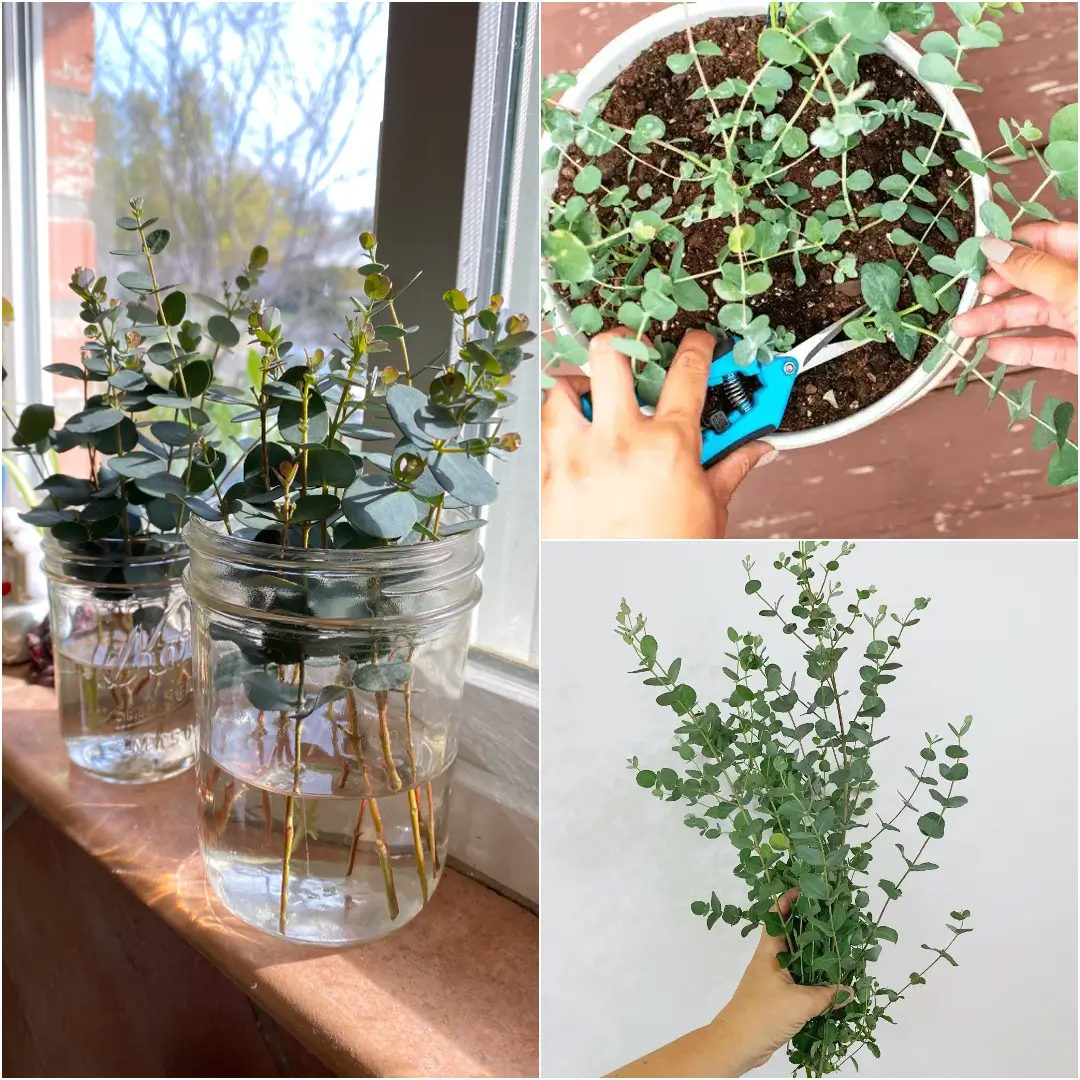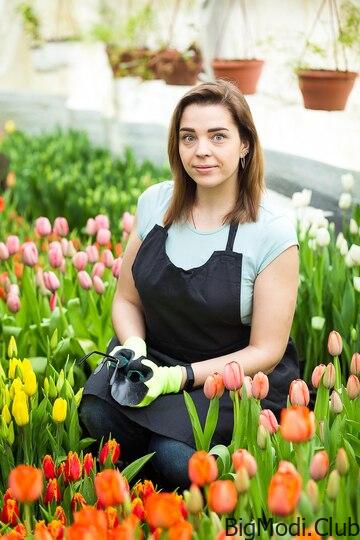Growing your own eucalyptus tree can add beauty and fragrance to your garden or home. Eucalyptus (specifically Eucalyptus cinerea, also known as the silver dollar tree) is well-loved for its aromatic leaves, fast growth, and striking appearance. But how exactly do you grow and care for this Australian native? In this article, I’m going to walk you through everything you need to know—from choosing the right location to propagating new plants and keeping them healthy.
Let’s dive in and explore how you can successfully grow eucalyptus at home!
What Is Eucalyptus?
Plant Type and Characteristics
Eucalyptus cinerea is a fast-growing evergreen tree that can reach heights of nearly 60 feet in its natural Australian habitat. However, when you grow it at home, especially in smaller gardens or containers, it typically maxes out around 6 to 10 feet. This makes it manageable for most gardeners, even if you’re just starting out.
One of the most appealing aspects of eucalyptus is its peeling reddish-brown bark and silvery-blue leaves, which give off that classic, menthol-like fragrance when bruised. You’ve probably smelled it before—whether in essential oils, lotions, or even candles. The scent is unmistakable, and having that fragrance right in your garden can feel incredibly refreshing.
Planting and Growth Conditions
Best Time to Plant
Timing is everything, right? Well, when it comes to planting eucalyptus, spring is your best bet. Planting in spring gives the tree plenty of time to establish its roots before the growing season hits its stride. Plus, you’ll avoid any frost that could potentially damage young plants.
Soil Requirements
Eucalyptus trees aren’t too fussy when it comes to soil. However, for the best growth, they prefer well-drained soil with a slightly acidic to neutral pH level. This means the soil should have the ability to let water pass through without becoming too compacted or waterlogged.
Does your soil have drainage issues? You can easily improve it by adding organic matter like compost, which not only helps with drainage but also gives the tree some added nutrients.
Sunlight
Eucalyptus loves the sun. If you want a happy, healthy tree, plant it in a spot that receives at least six hours of direct sunlight each day. Think of it like this: Just like we thrive under the warm sun, so does your eucalyptus. Whether you’re growing it in your garden or in a container, make sure it’s soaking up the rays.
Watering
While eucalyptus trees are somewhat drought-tolerant once they’re established, they’re not fans of being left too dry for too long. A good rule of thumb is to water when the soil feels dry to the touch. For container plants, this usually means watering about once a week, especially if you haven’t had rain.
Keep an eye on the leaves—if they start to droop or curl, it might be your tree’s way of saying, “Hey, I’m thirsty!”
Temperature and Humidity
Eucalyptus is a fan of warm temperatures, ideally between 65 and 75 degrees Fahrenheit. They don’t do well in the cold, so if temperatures dip below 50°F in your area, it’s best to grow eucalyptus in a container that you can bring indoors when things get chilly. These trees can also handle moderate humidity, making them fairly versatile in different climates.
Spacing
If you’re planting more than one eucalyptus tree, make sure to space them at least 8 feet apart. This ensures they have enough room to spread their roots and grow to their full potential.
Caring for Eucalyptus
Fertilizer
One of the great things about eucalyptus trees is that they’re pretty low-maintenance in terms of feeding. If you’re growing them in the ground, you typically don’t need to worry about fertilizing. However, if you have a container plant, you’ll want to use a low-nitrogen houseplant fertilizer during the growing season. This helps replenish the nutrients that get used up faster in pots.
Pruning
Eucalyptus trees don’t require much pruning, but it can help them look their best. If your tree has overgrown or misshapen branches, or if any branches are broken, go ahead and trim them back in the summer. Just be cautious about pruning during humid weather—it could invite diseases that you definitely want to avoid.
Propagation: How to Grow Eucalyptus From Cuttings and Seeds
From Cuttings
Want to grow more eucalyptus without buying new plants? You can propagate eucalyptus from cuttings, though it’s not always foolproof. Here’s a step-by-step guide:
- Cut a healthy 5-inch stem with about four to eight leaves from a eucalyptus tree.
- Remove the leaves from the lower half of the stem.
- Dip the cut end in rooting hormone to boost your chances of success.
- Plant the cutting in a mixture of composted tree bark and perlite, keeping it in indirect light at around 70°F.
- Keep the soil moist but not soggy, and after about a month, roots should start to form.
From Seeds
Growing eucalyptus from seeds is a bit more involved, but it’s definitely rewarding! Start by chilling the seeds in your fridge for two months. Once that’s done, follow these steps:
- Sow seeds in a seed-starting mix in peat pots.
- Lightly cover the seeds with soil and keep them in a warm, bright spot.
- Mist the soil to keep it moist, and expect germination within two to three weeks.
- Once the seedlings are about 6 inches tall, they’re ready to move outdoors.
Potting and Repotting Eucalyptus
If you’re growing eucalyptus in a container, start with a 5-gallon pot. This size gives the roots enough room to grow without the need for constant repotting. Plus, eucalyptus doesn’t like its roots disturbed, so minimizing repotting is ideal.
For pot material, unglazed clay is a great option because it allows moisture to evaporate. However, if you want something lighter that’s easier to move around, go for plastic. Just make sure your pot has plenty of drainage holes.
Protecting Your Eucalyptus in Cold Weather
If you live in a region with cold winters, you’ll need to bring your eucalyptus indoors before frost sets in. Place it near a sunny, south-facing window for the winter. You’ll also want to scale back on watering and skip the fertilizer until spring rolls around.
Harvesting Eucalyptus Leaves
The best time to harvest eucalyptus leaves is later in the growing season when the plant is mature. Snip the leaves off with pruners or your hands and air-dry them. Lay the leaves on a paper towel or drying screen in a cool spot out of direct sunlight. Once they’re leathery or crispy, store them in sealed glass jars.
Common Problems with Eucalyptus
Brown Leaves
If your eucalyptus leaves are turning brown, it could be a sign of too little moisture or even a fungal disease. Make sure you’re watering regularly and the soil stays lightly moist. If a fungal disease is suspected, trim away the affected leaves and treat with an appropriate fungicide.
Falling Branches
Due to their potential size, eucalyptus trees can sometimes have branches that fall or break. Keep an eye on heavy branches and prune if necessary to prevent accidents.
Pests and Diseases
Eucalyptus is generally pest-resistant, but stressed plants may attract eucalyptus long-horned borers. Signs of infestation include holes in the bark, oozing sap, and discolored foliage. If you spot these signs, remove the affected parts immediately.
In terms of disease, leaf spots, root rot, and heart rot can be problematic. Heart rot, in particular, can be devastating, causing the tree to decay from the inside out. Unfortunately, once heart rot sets in, the tree will need to be removed.
Growing eucalyptus at home is not only rewarding but also adds a unique charm to your garden with its fragrant leaves and beautiful appearance. Whether you’re planting it in your yard or growing it in a container, this versatile tree can thrive with the right care. Remember to provide well-drained soil, plenty of sunlight, and regular watering. If you’re feeling adventurous, try propagating your own eucalyptus from seeds or cuttings!
So, what are you waiting for? Get planting and enjoy the refreshing scent of eucalyptus in your own space!
FAQs
Is eucalyptus hard to grow?
Not at all! Eucalyptus is relatively easy to grow, especially if you provide the right conditions. They thrive in well-drained soil and require plenty of sunlight. Once established, they are drought-tolerant and require minimal care. Just make sure to keep an eye on watering and avoid over-pruning during humid weather.
How can I grow my own eucalyptus?
You can grow eucalyptus from seeds or cuttings. Start by choosing a healthy tree, and if you’re using seeds, chill them for a couple of months before planting in a seed-starting mix. For cuttings, take a healthy stem, remove the lower leaves, dip it in rooting hormone, and plant it in moist compost. Keep it in indirect light until it roots.
Can I grow eucalyptus from a cutting?
Yes, absolutely! Eucalyptus can be successfully propagated from cuttings. Take a healthy stem cutting, remove the lower leaves, dip it in rooting hormone, and plant it in moist soil. Keep it warm and well-watered until roots develop. With a little patience, you’ll have a new eucalyptus plant in no time!
Where do eucalyptus trees grow best?
Eucalyptus trees thrive best in warm, sunny environments with well-drained soil. They prefer temperatures between 65-75°F and need at least six hours of direct sunlight daily. If you live in a colder climate, consider growing them in pots so you can bring them indoors during winter months.


